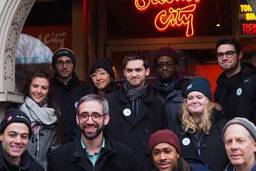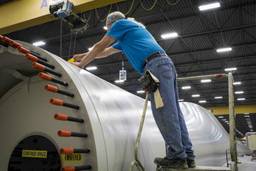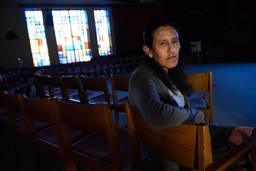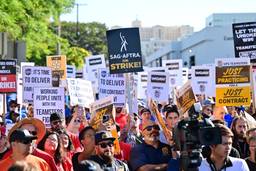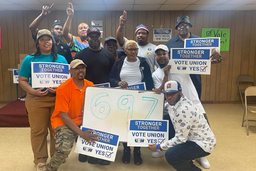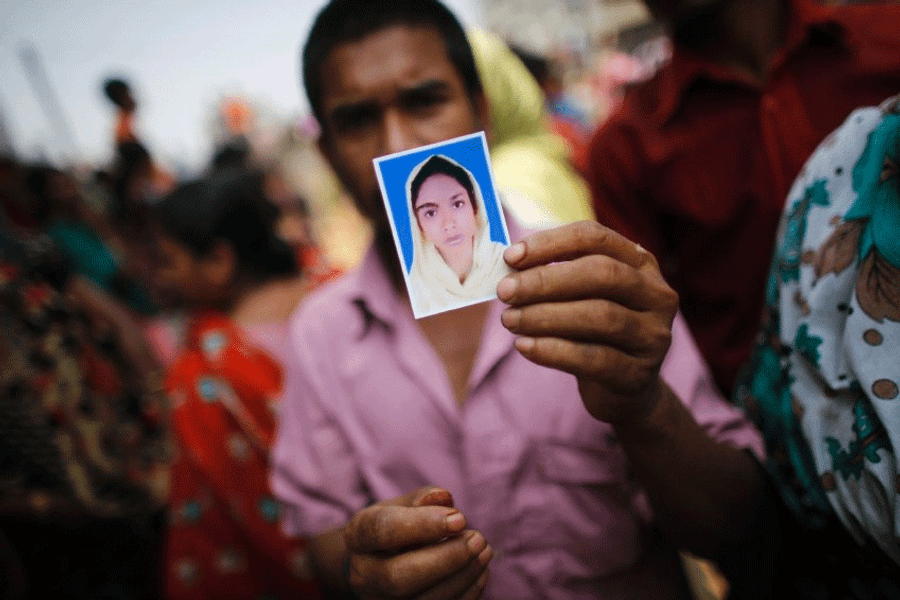
On the one-year anniversary of the deadly collapse of Rana Plaza, an eight-story factory in Bangladesh — one small component of the multi-billion dollar global garment industry — labor groups around the world are taking to the streets, chanting “never again.” In Bangladesh, family members of the over 1,100 garment workers killed joined former workers and protesters outside the site of the collapse, while activists in London formed a human chain on the city’s busiest shopping street to urge local retailers to be more transparent about working conditions in their supply chains.
In the year since the collapse, advocates say they have successfully shifted the conversation about responsibility for factory production conditions to the multinational corporations themselves — such as Benetton and Nordstrom, both of which had tags found in the Rana Plaza wreckage. The groups have also begun to facilitate a dialogue around the ways in which corporations profit from low wages and corner-cutting on safety for the production of the cheap, fashionable clothes they peddle.
But while the media may recognize that the responsibility for garment workers belongs to the multinational companies that outsource to them, few corporations have taken part in the concrete steps championed by advocacy groups to help victims. For example, a compensation fund for victims was set up to enable retailers to donate to the impacted workers, but only $15 million — one-third of the $40 million goal — has been raised by the International Labor Organization (ILO), which chairs the fund.
The corporate community’s inaction has left survivors scrambling to make a living without adequate healthcare or wages, according to a report by Human Rights Watch. Another round of interviews conducted by ActionAid, a global NGO, interviewed 1,436 survivors and 786 family members of workers who died in the Rana collapse. The study found that two-thirds of them had trouble buying food, and half found it difficult to make rent. Almost three in four hadn’t been able to work, and 76 percent were still receiving medical treatment.
Rabeya Begum was one of the 2,500 workers rescued from the rubble. In December, Begum lost both of her legs due to injuries she sustained in the collapse. But because her legs were removed months after the incident, Begum missed out on the government compensation program meant to provide a guaranteed income to workers who had lost limbs in Rana Plaza. Without a guaranteed income, she has been relying on donations to survive, but says that money will soon be gone as well. “ I have four children and my husband can no longer work because he needs to look after me,” she told Human Rights Watch.
The ILO’s Convention 121 dictates the compensation due to an injured worker based on their loss of future earnings, as well as pain and suffering. After the Bangladeshi disaster, ILO proposed $40 million in compensation for survivors.
But according to Liana Foxvog, director of organizing and communications for the forum, there are no legal mechanisms compelling retailers to pay into the compensation fund. That loophole made attempts to compel multinationals to pay damages for an earlier disaster—a 2012 factory fire in Bangladesh which left over 100 dead—all but futile.
For Rana Plaza workers, the first installment of fund payouts as it stands will be $645 per worker.
(In 2012, the year before the walls of Rana Plaza crumbled, Walmart, one of the largest multinationals that allegedly outsourced to Rana Plaza — a claim the company denied — made $17 billion in profits.)
Aside from material relief, one of the concrete gains that came out of the post-collapse outcry was the Bangladesh Accord on Fire and Building Safety, a legally binding agreement overseen by the ILO and several workers rights groups. The accord sets safety standards and mandates public reporting of independent safety inspections. Along with union signatories, over 150 apparel corporations have signed on to the accord, though major U.S. companies like Gap and Walmart are conspicuous absences.
Though Walmart denies being an “authorized” supplier to Rana, news reports found that one of the factories listed Walmart as a client. The corporation has long been a target of labor groups in the U.S., that call on the company to improve working hours and benefits for associates in its stores, as well as for improved safety conditions in its warehouses.
Wal-mart hit abroad, and at home, with labor unrest
Thirty-some protesters picketed outside of a Walmart Express on Chicago’s North Side yesterday, the one-year anniversary of the Rana Plaza collapse, stressing that the differences in Walmart’s treatment of its workers in the supply chain are only of severity.
David Fields, 44, was among the group of Chicago-area protestors. Fields says he was fired from his job this month — as a forklift driver at a warehouse that supplies Walmart, half an hour south of the city in Hammond, Ind.— because he spoke out about the need for an adequate fire alarm system in the building. And that safety concern was only the tip of the iceberg, said Fields, who had been working at the warehouse since September. “At some point we all started feeling like modern day slaves,” he said, describing his days working in sub-zero temperatures during the icy polar vortex that hit Chicagoland this past winter. “They didn’t care that people were getting frost-bitten.”
Fields’ complaints carry echoes of those commonly made by workers in supply-chain factories overseas, especially the pressure to always speed up production and continue working in severe climate conditions. Najneen Akter Nazma, a factory worker who survived the Rana disaster — though her husband was killed — said she and her husband had been told about a crack running across the floor near his workstation, but knew they couldn’t take a day off work because it would cost them their monthly salary. And for Fields, a slippery floor in the warehouse, wet after a day of rain — which for his supervisors is no excuse to slow down work — carries with it the constant fear of being injured by the heavy loads he used to work with.
For his part, Fields was able to file a complaint with the National Labor Relations Board after he was fired. Garment workers in Bangladesh — who have long labored in unregulated industries — are offered few labor protections.
Feeling the heat, but is it enough?
Foxvog has said it’s clear the garment industry has felt the public pressure to take responsibility for its contract workers overseas, will it be enough to compel corporations to change production practices? A handful of North American industry leaders — including Walmart — created the Alliance for Bangladesh Worker Safety in response to the disaster, which they say will release regular reports and maintain standards in Bangladesh factories, much in the same way the third-party Bangladesh Accord is intended to. Despite the promises of adequate oversight, only one of the 26 companies in the alliance—Fruit of the Loom—has signed onto the Bangladesh Accord, which has the backing of U.N. groups, unions and advocates.
In a statement on the Rana Plaza tragedy, Walmart stressed that “the safety of workers in our supply chain is very important” to the company. It went on to note that Walmart had made a $3 million contribution to a Bangladeshi humanitarian fund, while also touting its role in the alliance. Advocates want Walmart to instead pay into the ILO-led compensation fund, and sign on to the safety accord, which they argue has more impartial oversight.
Walmart has repeatedly denied its connection safety and workplace issues in its warehouses, and has used plausible deniability in the past to distance itself from its Bangladeshi suppliers. Still, thanks to international pressure — and despite its initial denials of responsibility — Walmart has been forced to publicly address the conditions in Bangladesh, and make minor concessions.
But that strategy hasn’t carried over to the company’s stateside operations. Walmart has claimed it is not responsible for the conditions in the Chicago-area distribution warehouse as workers were employed through a “third party service provider,” essentially proxies the company uses to contract with the warehouses. Only time will tell if the burgeoning movements against Walmart’s labor practices in the U.S. will eventually win comparable victories.
To keep a tragedy like the Rana Plaza collapse from occurring again, workers groups are calling for a fair-trade, unionized workforce as the only way to keep companies accountable, both at home and overseas.
For Foxvog, that means that “victims need compensation,” but also that workers must be afforded the “the right to refuse dangerous work” when they fear the foundations of their building won’t stand, a right denied the workers of Rana Plaza, and with deadly consequences.
